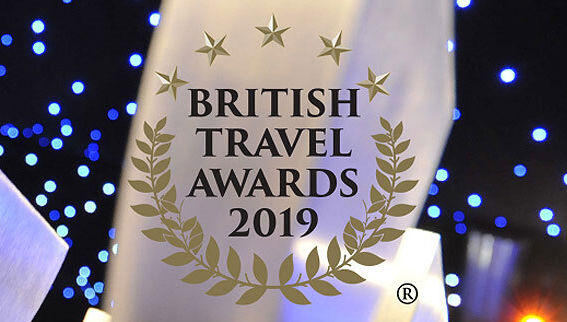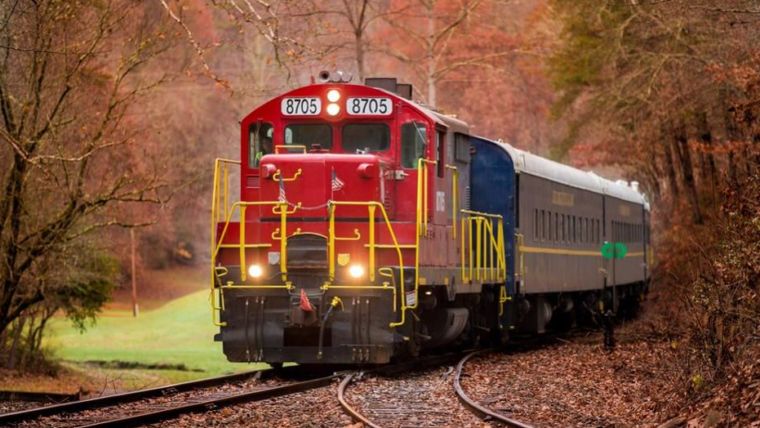Railbookers Group’s third-annual Global Summit, held Nov. 18-20, gathered hundreds of Railbookers employees, national rail operators, luxury partners and travel advisors at the Hilton Lake Las Vegas Resort & Spa, creating a sense of momentum around a category the company repeatedly described as being on the verge of transformation.

The event opened with Emmy-winning travel host Samantha Brown welcoming attendees before Frank Marini, president and CEO (pictured above), stepped on stage to expand on the conference theme, the “Renaissance of Rail Travel.” Marini pointed to the company’s scale and the demand that continues to build, noting that Railbookers and Amtrak Vacations generated more than $1.4 billion in sales in the last year alone. The message was clear: rail is entering a period of accelerated global relevance, and Railbookers intends to be the center of that expansion.
Leaders from Trenitalia, Amtrak, Eurostar, Swiss Travel System and Alaska Railroad spoke about demand and new capacity, while Railbookers used the summit to preview two new Italian product lines—the Executive Collection, built around high-speed Executive Class service on Trenitalia’s Frecciarossa trains, and Italy Uncovered, which focuses on regional towns and lesser-known routes.
Attendees also heard details about a new set of Amtrak Vacations itineraries designed for next year’s 250th anniversary of the U.S., a collection that stretches from colonial cities to western national parks and several of Amtrak’s most iconic long-distance routes. Taken together, these expansions signaled the company’s intention to grow luxury travel, deepen its footprint in Italy and position domestic rail as a significant opportunity for the anniversary year ahead.
Marini returned to many of these themes throughout the summit, describing rail travel as reaching the same kind of inflection point river cruising experienced before it moved into mainstream demand. In his view, rail’s trajectory is structural, not speculative. As he and his team often note, there are only so many rivers in the world, but train tracks keep being built. The global network already exists, consumer interest in independent travel continues to rise, and more travelers across multiple demographics—including luxury travelers, honeymooners and younger couples—are choosing rail because the complexity is handled for them.
Railbookers’ remote operating model supports much of this growth. The company now functions as one of the largest fully remote travel organizations in the world, with staff working across six countries and dozens of U.S. states. Marini framed remote work not as a compromise but as a competitive advantage, allowing faster hiring, broader coverage, access to deeper talent and a culture built around communication and accountability..
Marini also detailed the company’s internal AI ecosystem, which remains deliberately inward facing. Rather than using chatbots for customers, Railbookers applies AI to train staff, analyze call transcripts, uncover frequently asked questions and identify the behavioral patterns that later become formalized itineraries.
Underlying that internal structure is a weekly ritual Marini calls the “Mic Email,” in which every employee submits three observations or learnings. These are then analyzed to detect trends or recurring issues, providing what Marini referred to as “situational awareness at scale.”
That blend of human input and AI analysis supports Railbookers’ pattern-recognition product model. As Marini explained it, the company constantly monitors booking behavior. When a pattern repeats at meaningful volume—a Chicago to Glacier National Park to Seattle corridor, for example—the product team formalizes the itinerary, prices every departure two years into the future and routes it to marketing for packaging. “We see trends before they become a trend,” he said. “We’re packaging and amplifying what customers are already telling us they want.”
Kaitlyn Birkinshaw, vice president of marketing for Railbookers, reinforced several of these points, emphasizing that her team’s mission is to help advisors and consumers stop thinking about rail as a simple mode of transportation and start seeing it as a full travel style. That shift in language is based entirely on the vocabulary customers themselves use when describing what confuses them or draws them in.
Birkinshaw described the company’s marketing split as roughly 60 percent travel advisor and 40 percent consumer, with consumer-facing visibility deliberately designed to drive travelers back to advisors rather than bypassing them. The company’s presence on such popular TV game shows as “Jeopardy!” and “Wheel of Fortune” has created brand awareness that often ends up sparking advisor inquiries from clients the next morning.
Birkinshaw also outlined an extensive library of advisor tools: downloadable maps, social templates, flyers, portal content and media stories produced by writers who have completed Railbookers and Amtrak Vacations itineraries firsthand. She said the network maps remain one of the most impactful selling tools because they visually demonstrate how far rail can take a traveler, something many new advisors have never seen from a top-down perspective.
Birkinshaw previewed the redesigns of the Railbookers and Amtrak Vacations websites, which will soon incorporate enhanced search and filter functions, deeper explanations of logistics, hotel proximity to stations, pricing transparency and a new conversational AI search tool that lets users describe intent rather than type keywords. Another initiative she previewed was a series of “AI Podcasts,” internally generated audio conversations based on the most common questions customers and advisors ask. She said these would expand in 2026.
Andy Channell, senior vice president of product for Railbookers, delivered a global view of where Railbookers sees demand growing the fastest. Italy and Switzerland remain top performers, with combinations among Florence, Rome, Venice, Zermatt, St. Moritz and Milan driving significant volume. Ireland is becoming a stronger rail destination than many advisors realize, helped by Channell’s observation that small groups—six passengers or more—have doubled as a percentage of total bookings.
Japan, Scandinavia and the U.K. continue to rise, and the ASEAN region, which includes Southeast Asian markets such as Singapore, Malaysia and Thailand, is emerging as a growth area as new rail corridors develop. Channell confirmed that his team relies on the same pattern-recognition engine that Marini described, translating booking behaviors into formal itineraries as soon as the data justifies it. Once an itinerary is triggered, the system automatically prices daily departures two years ahead—going beyond Amtrak’s own booking horizon—and packages hotels, sightseeing, rail classes and transfers into a ready-to-market product.
Business development updates from Cris David, vice president of global sales for Railbookers, and Jim Marini, senior vice president of strategic partnerships for Railbookers, tied product and marketing strategy back to the travel advisor community. Railbookers is now preferred with nearly every major consortium in the U.S., Canada, the U.K., Australia and New Zealand, giving the business development team a wide base through which to identify new advisors and re-engage those who may have booked in the past.
David and Jim Marini noted the rapid influx of new-to-industry advisors, estimating that roughly half of all active advisors are new. This has shaped the company’s approach to education, training and personalized support. Marini emphasized that advisors can work consistently with the same rail expert, can use three-way calling for complicated customer questions, and receive commissions within two weeks after clients return. He also stressed that advisors earn significantly higher commission through Railbookers than they would trying to assemble multi-stop FIT rail trips on their own.
Pre- and post-cruise business continues to be a major part of travel advisor engagement. According to the business development team, one-third of advisor bookings involve pre- or post-cruise extensions, often in Switzerland or Italy, and Railbookers can take clients far beyond the immediate embarkation or debarkation port. This mirrors the company’s broader message that rail travel can be inserted seamlessly into a much larger vacation architecture, creating the same kind of land-and-sea combinations that helped propel river cruising into broader popularity.
As the Railbookers Global Summit made clear, rail is no longer a niche category. It is a global platform with an established infrastructure, rising demand and widening demographic appeal. Travel advisors who once treated rail as an afterthought are being encouraged to see it as a first option.
Luxury rail is rising sharply. Small groups are booking at double last year’s volume. Younger travelers are discovering rail through honeymoons and special-occasion travel. Domestic rail is about to enter a peak year ahead of the 250th anniversary of the U.S. Europe remains strong, and Asia and the U.K. are generating new interest. Through it all, Railbookers is presenting itself not as a ticketing service but as a one-stop FIT packaging that handles the complexity advisors and travelers encounter.
“Trust us, We’ve done this for hundreds of thousands of people,” said Frank Marini. “Rail isn’t complicated when you have a partner.” For more information, visit www.railbookers.com or www.railbookersgroup.com.
Originally reported by Insider Travel Report on November 24, 2025.





